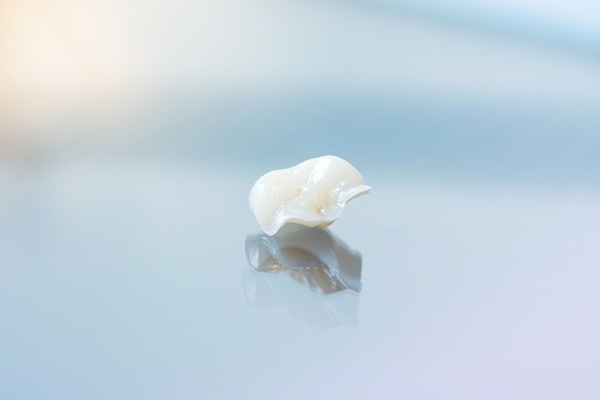 While it might not seem that common, receiving a partial denture for one missing tooth is a solution that is well-known among dental professionals. According to the American Dental Association, the average person between 20 and 64 years of age has three or more missing teeth. This can happen for reasons such as serious decay, an accident, or a pulled tooth.
While it might not seem that common, receiving a partial denture for one missing tooth is a solution that is well-known among dental professionals. According to the American Dental Association, the average person between 20 and 64 years of age has three or more missing teeth. This can happen for reasons such as serious decay, an accident, or a pulled tooth.
Just one missing tooth can result in significant consequences for the overall health of a person's mouth. The exact consequences depend in part on the location of the missing tooth. For example, a missing molar is likely to impact chewing. An absent tooth that is closer to the front of the mouth will produce a visible gap and could also affect how a person speaks. Perhaps most seriously, a missing tooth can cause remaining teeth to shift as well as cause bone loss around the absent tooth.
A dentist can recommend the appropriate option for dealing with missing teeth. A partial denture is a right approach for many people.
The options for a partial denture
Not every partial denture for one missing tooth is the same. The dentist has a choice of several common removable denture designs. The first is a replacement tooth attached to gum-colored plastic bases. A second choice involves a metal framework that clasps to nearby teeth. A third choice utilizes precision attachments that are useful in specific situations:
- The necessity of a crown to help with fit.
- The desire for a more pleasing appearance.
- The ability of the patient to accept a higher cost.
The dentist will design the right partial denture for each person. Even with a smaller denture, an adjustment period is to be expected. Most people take about 30 days to feel comfortable wearing the partial denture.
Eating meals and snacks is often challenging the first few days. Individuals should start small and slow and try soft foods. Chewing on both sides of the mouth can help a person adjust. Also, avoiding chewy and sticky foods at first is recommended.
The process of getting comfortable
In addition to coping with eating, new wearers of a partial denture might experience a sense of discomfort. In many situations, this will gradually improve over a short period of time. With a partial denture, the removal and inserting process will take some practice. The partial denture should never be forced into place as this could break the prosthesis.
At first, the dentist may recommend the person wear the partial denture most of the time. This can help shorten the adjustment period, as well as identify any areas that cause soreness. The dentist could have to make alterations to the denture to keep it from causing soreness in the soft tissue of the mouth. Soon, the denture should be taken out of the mouth at night and reinserted in the morning.
Conclusion
Due to the frequency of missing teeth in people of all ages, a partial denture for one missing tooth is a common solution. It helps people replace a missing tooth through a proven process.
Request an appointment or call Hemet Dental Center: Brian Stiewel DDS, INC. at 951-707-4366 for an appointment in our Hemet office.
Recent Posts
Though a seemingly small problem to some, just a single missing tooth disrupts the alignment of your smile and can lead to bone loss and difficulties with chewing. Fortunately, modern dentistry offers several effective single-tooth replacement options. Knowing these options and the type of tooth replacement that suits you can help you make an informed…
When it comes to replacing teeth, some people feel it is unnecessary to get a partial denture for one missing tooth. However, even one missing tooth can cause severe damage to the rest of the mouth and even lead to behavioral issues such as embarrassment or loss of confidence if it is not replaced with…
For anyone who has a gap in their smile due to a missing tooth, a partial denture for one missing tooth can restore confidence. Dentures are commonly placed for aesthetic purposes, but there are two other reasons you should not hesitate to replace a missing natural tooth with a partial denture.You can get partial dentures…


